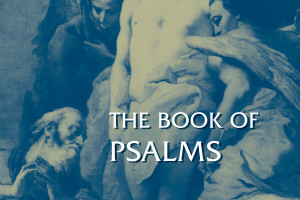This beautiful folio volume contains the critical edition of a portion of Codex 573 of the Meteora monastery of Metamorphosis (also known as minuscule manuscripts 2329 and 2351 of the book of Revelation), as well as Tzamalikos’ comments on the manuscript and its provenance. The critical text presents a collection of anonymous interpretive passages that explain particular lemmata in Revelation, known as the Scholia in Apocalypsin. These scholia comment selectively upon segments of Revelation up to 14:5 in an effort to combat unpalatable theological beliefs (p. 41) and, more importantly, to argue that the theological message of Revelation is consistent with the rest of Christian scripture (p. 60). Various apologetic concerns with canon, scripture, and doctrine are addressed in the Scholia.
Tzamalikos prefaces the volume with an extended critical discussion about the manuscript, its history, its text, and its provenance. The majority of his treatment of these introductory issues is adept and interesting. Tzamalikos engages linguistic peculiarities, text critical issues, and locates the work within the broader milieu of the 6th century CE (the manuscript is a 9th century copy of a 6th century original; p. x). Despite his textual aptitude, a troubling theme is strung throughout the introduction: that the manuscript is definitively attributable to Cassian, a Sabaite monk from Jerusalem and “heretofore eclipsed” 6th century church father (see pp. xv, 70-79). Tzamalikos vehemently (and sometimes inappropriately [see p. ix, xv]) disagrees with German scholarship on this work, particularly Harnack who, in his 1911 edition of the manuscript, attributed the work to Origen (p. 87). As an alternative Tzamalikos suggests that the author is “another Cassian, unknown and non-existent to scholarship thus far” (p. 75, emphasis original). This type of claim gives one pause, especially when it is not thoroughly supported by definitive evidence. Tzamalikos notes the attribution of this work to ‘Cassian’ in a colophon on folio 290, but this hardly indicates authorship for work preserved in only a single manuscript. His discussion of authorship is made up of assertions, but very few reasoned arguments (p. 74). This issue distracts from what is otherwise a very learned evaluation of an important ancient commentary. Tzamalikos must be commended for his boldness, but the volume would have been stronger if the manuscript, not the author of its text, had remained in primary focus.
The second section of the volume is composed of two parts. First, the critical text of the Scholia is presented (pp. 97-195). The text of Revelation is set off in a light grey box above the text of the commentary for each of the 39 scholia. While visually pleasing, it is not clear how the text is discrete from its comments in the manuscript itself. The text of the lemmata are compared to the text of Revelation as it appears earlier in the same codex and copious text critical notes are offered. English translations of the commentary (not main text) are provided.
The final part of the volume is further commentary on the scholia themselves (pp. 199-412). Comments include philological and grammatical issues, numerous cross-references with other Christian literature, and historical and theological considerations.
This volume is a mixed bag. First, it is a beautifully produced folio hardback. It is a truly handsome volume. Second, the critical text it contains is a helpful tool for researchers working with the text of Revelation, its reception in late antiquity, its ancient interpretation, or theological discourse in the 6th century. Tzamalikos’ extended commentary on the scholia are also of value. The major issue with the volume is, as I’ve noted, his insistence that the author is a previously unknown monk whose work was suppressed due to accusations of heresy (p. 4). This issue, at least in my mind, casts doubts on the quality of the entire volume. Overall, this volume is valuable for those who intend to work with the critical text, but Tzamalikos’ arguments should be approached with caution.
The Bottom Line: I recommend this volume for experts who handle the text of Revelation and for those interested in its early reception history. This volume is not for the uninitiated or interested non-specialist.
Garrick V. Allen (ga22@st-andrews.ac.uk)
University of St Andrews





Leave a Reply
Your email is safe with us.